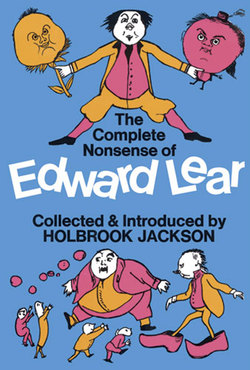Читать книгу The Complete Nonsense of Edward Lear - Edward Lear - Страница 12
На сайте Литреса книга снята с продажи.
6
ОглавлениеUncertainty of income (for even the patronage of rich friends does not stabilise his finances) predisposes him to wish for a sinecure, and when, in 1863, Greece took to herself a king, Lear requests his friend Fortescue (afterwards Lord Carlingford) to ‘write to Lord Palmerston to ask him to ask the Queen to ask the King of Greece to give’ him a ‘place’ specially created, the title to be ‘Lord High Bosh and Nonsense Producer . . . with permission to wear a fool’s cap (or mitre)—three pounds of butter yearly and a little pig,—and a small donkey to ride on’. Before that, rumour having raised Mr. Gladstone to the Hellenic throne, Lear had threatened to ‘write to Mr. G. for the appointment of Painter Laureate, and Grand Peripatetic Ass and Boshproducing Luminary’ to the Greek Court.
The problem of finance was a constant irritant, and his wish to stabilise his income, though couched in the Learian nonsense idiom, was none the less a reality. But although he was chronically short of cash, he was never actually destitute or even poor. It was the lack of regular income rather than poverty which gave him a permanent feeling of insecurity. He was thus forced by circumstances to think unduly about money. Such a condition might have made him thrifty, which is often the first step to miserliness; but he was as generous as he was poor and continually helped the still poorer members of his family and others less closely related. ‘I only wish for money to give it away,’ is no idle boast, as we know from the records of many generous acts. His books contribute little to his variable income and it is to his landscapes that he turns for subsistence. He becomes a travelling showman of his own works, for at Corfu or Valetta or San Remo, he holds exhibitions, and in his later years there was a small permanent show of his pictures at Foord’s Gallery in Wardour Street. But customers are shy and they do not always pay promptly. The position would have been still worse but for the support of regular patrons. His old friends are ever ready to help and to enlist the help of their friends, but even then there are lean periods, for, alas, ‘private patronage must end in the natural course of things, but eating and drinking and clothing go on disagreeably continually.’ Like William Blake he began his career as an illustrator of the works of others, and it was as a delineator of birds for the ornithologist John Gould that he attracted the attention of Edward Stanley, thirteenth Earl of Derby, the Whig statesman and scholar, known to literature as Bulwer Lytton’s ‘Rupert of debate’. Lord Derby engaged him to illustrate a book on the menagerie which was then a show-piece of the Stanley demesne at Knowsley near Liverpool. This commission was momentous, for it earned him the lifelong patronage of the noble family which has done many more serviceable things than lend its name to the most famous horse race in the world, not least the befriending of the quaint ‘cove’ whose work has already outlived the fame of his first kindly and illustrious patron. Edward Lear worked for no less than four successive Earls of Derby—but, more important still, he worked or rather played for the children in the household of his first patron, and by so doing achieved immortality. The first Book of Nonsense was composed to amuse the grandchildren, nephews and nieces of the thirteenth earl, to whose ‘great-grandchildren, grand-nephews and grand-nieces’, it is dedicated.
